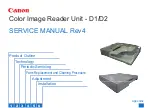
6
1.3
Suggested Switch Settings
Under normal circumstances the
Data I/O
switch should be set to
NORMAL
. If the
radio’s serial data I/O pins are swapped, place this switch in the
REVERSE
position. You
will need to consult your radio’s instruction manual for this information.
The AT-AUTO
(
tm
)
does not issue hardware flow control signals (RTS/CTS). Therefore
Data
Handshake
should be switched to
INT
whenever the AT-AUTO
(
tm
)
is to send query com-
mands to the radio. However, when the radio is to be under computer control, this switch
may be set to
PC-RIG
position if necessary to prevent data buffer problems.
To upload firmware to the AT-AUTO
(
tm
)
, switch the
Function
switch to the
UPLOAD
position. When set to the
UPLOAD
, the settings of the
Data I/O
and
Data Handshake
switches will have no effect.
When using just the AT-AUTO
(
tm
)
and the radio, place the
Function
switch to the
NOR-
MAL
position. This enables the AT-AUTO
(
tm
)
to query the radio’s frequency. When in
this position, the computer will not have any effect on the operation of the AT-AUTO
(
tm
)
or the radio. Place the
Function
switch to the
Y-CABLE
position to enable the com-
puter to control the radio and permit the AT-AUTO
(
tm
)
to “intercept” and follow the radio’s
frequency data sent to the computer.
NOTE:
Some radios such as the Yaesu FT-990, and FT-1000 are incompatible with
Y-
CABLE
operation and yield erratic and unpredictable results. Do not use the
Y-CABLE
setting when using the FT-1000, etc.
NOTE:
The Elecraft K2 uses a NON-standard serial port. Damage to the K2 will result
if connecting the K2 to a standard serial port. DO NOT use the USI with the Elecraft K2.
www.KesslerEngineeringLLC.com


























